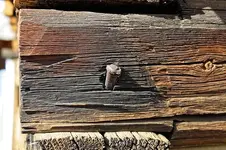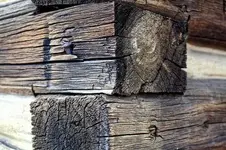If people are saving the relics and other finds from a site, and keeping them together with notes and with a view toward preserving the history of the site (which they ought to be doing), then it makes sense to keep at least a couple of the nails found from the site.
Just because square nails can still be purchased, that doesn't mean anything. It's like saying banks still have rolls of shiny new pennies. Too, you can still go buy seated dimes at a coin show; so what?
The evolution of square nail types follows a historical progression and can help date a site.
In the photo below, one of the square nails is particularly early. It would be plain foolish not to save such a one (or preferably all of them) if it were found at a site. Since most people are in this hobby for the history (...), the lack of monetary value of square nails is not an issue, I presume.
I believe the lack of rust on dug examples of the earliest nails is a function of the high quality iron ore used, as well as the laborious forging techniques which tended to purge impurities. The somewhat later nails are invariably caked with rust, and badly.
I do not save the badly-rusted examples of later 19th Century nails unless these are the earliest ones at a site, and the best specimens available.
Happy hunting,
Rusted
Well said rusted iron. All nails are not the same. There are the common square cut nails, and then there are the more historic hand forged ones. Henry Chapman Mercer who lived at the turn of the century was the pioneer of early American rural history, and he wrote an entire volume on square nails of Pennsylvania. He removed nails from existing dateable structures going back to the 1600's and was able to identify the evolution of styles, the dates, and as well, was able to identify some nails by location. These variations can be a great tool to a detectorist when there's little remaining to date a cellar hole or other similar site. The oldest ones were often so valuable to our early settlers that remains of timbers were often burned just to salvage the existig nails from the ashes.










 HHHH
HHHH